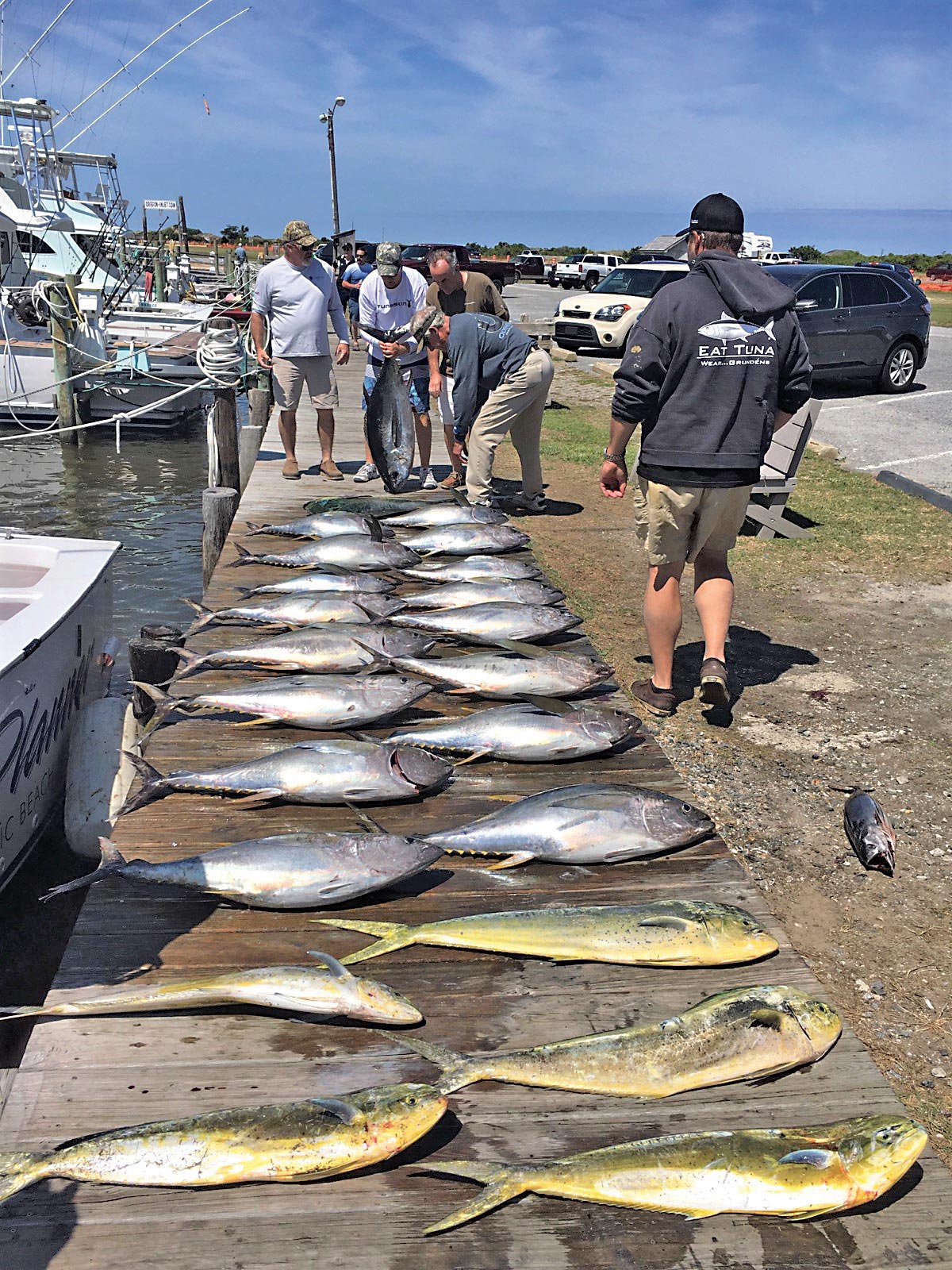Tuna fishing is a puzzle. Knowing how to rig lures/bait and set a spread are some of the pieces.
Water temperature, clarity and food source are needed for a productive offshore day. However, rods are not going to bend over if the bait is not dragged in the vicinity of fish. It’s important to gather as much information and intelligence as possible to decide exactly where to point the bow.
Sea Surface Temperature readouts give indication as to where temperature breaks can be found that can hold the necessary ingredients to produce results. Typically, this is where you will find a large number of the charter fleet; although finding the charter fleet and catching the number of tuna they do are two separate issues. The Gulf Stream moves from south to north, but when an eddy spins off, the water spins/moves independently. Meaning, in our Northeast canyons, the west side of the eddy (closest to shore) often moves water current in a direction of north to south. Why is this important? Typically fish move with the current. While looking for a school of yellowfin (or any species for that matter) anglers should start trolling with the current.
Studying a satellite image to find out which direction current is moving is for general purposes only. Nothing beats determining this onsite. By trolling a couple different directions, action of the bait and boat speed over bottom tells exactly the direction of current. When fishing an eddy or finger of water (Gulf Stream water that has not yet separated from main body) anglers are looking for the temperature break. Breaks have a cold and warm side. A break may only be 1 degree or could be a 3- to 4-degree change. Yellowfin typically will be found on the “warm” side of the break, especially when the temperature falls within their preferred range in the low 70s. So, concentrating your trolling pattern in the direction of the current on the warm side increases your chances of finding fish.

On the other hand, do not discount the cold side when fish cannot be located. There are always exceptions to rules, and more than once the bite has been found trolling against current on the cold side. But since baitfish tend to swim with current, and predators follow the meals, trolling with current on the warm side is a best bet. Typically a weed line or debris will be found accumulating somewhere along the break. If not, don’t discount working just the temperature break. Watch the sonar for fish holding deep and keep an eye out for our feathered friends sitting on the water or gliding about in search of their next meal. This pretty much says the boat is trolling in the correct area; keep in mind, fish do not feed 24/7. When fish won’t rise in water column to feed on surface, the use of a Z-Wing or planer often can put a fish or two in the box. While trolling deep is not normally part of a yellowfin trolling spread, if bait and fish are holding deep, it can be worth the effort to pull in a flat line and deploy a deep bait. This bait is typically a dark colored skirted ballyhoo.
After a bad day of trolling, a trip to the tackle shop is in order to buy a new shiny lure shimmering under lights often does the psyche good. Every angler looks to improve their chances of attracting yellowfin into the spread. Just remember there is no magical lure/bait. When a school rises to feed, everything can and often is a meal, although, tuna are partial to whatever they are feeding on so checking the stomach contents of the first yellowfin caught gives an indication of size of bait to offer.
Many charter boats use a 10-rod spread, consisting of eight skirted ballyhoo and two spreader bars pulled off the short riggers. Also two squid daisy chains are used as teasers. As for ballyhoo skirt colors, blue/white and black/blue are popular, but don’t overthink this. When a line goes off, do not wind in other lines; this often means that only one fish will be caught. A bite may last for an hour and lucky anglers might put a couple yellowfin in the box catching one at a time. Meanwhile, some boats at the same bite may end up with eight or more yellowfin. Those boats are burning a hole!
When that first rod goes down the boat begins to make a gentle turn in direction the first tuna is running. The crew now has an extremely important task…everyone grabs a line and begins to jerk, putting additional action into the baits. Yellowfin are a school fish and the extra action initiates additional bites. This technique is the ticket to multiple hookups and the addictive excitement of offshore fishing. Burning a hole is one factor why charter boats often come to the scale with those limits of yellowfin tuna.
For additional yellowfin tips and techniques, check out John Unkart’s books Offshore Pursuit and Saltwater Tales.




